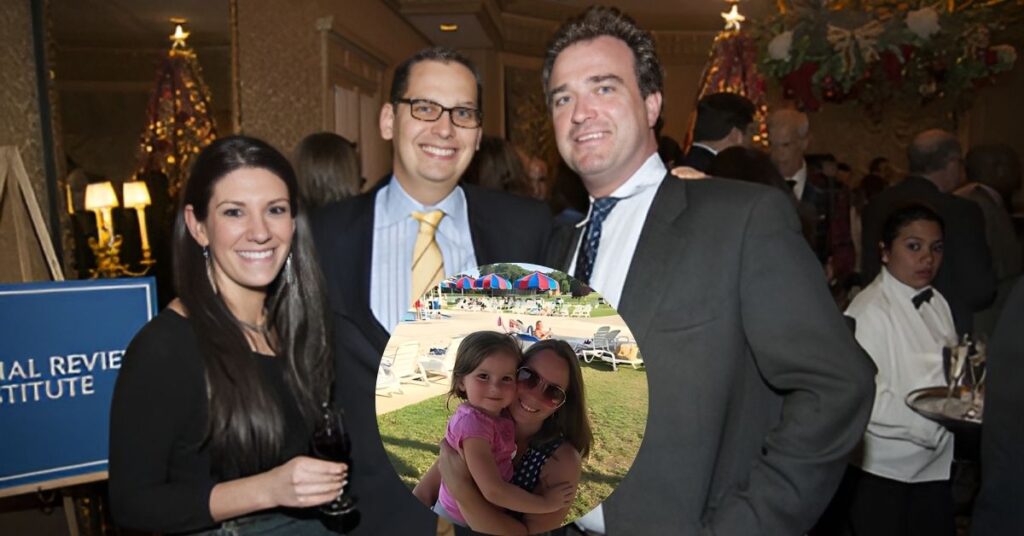In the tapestry of modern relationships, few stories resonate as deeply as that of Stephanie Hurt, whose marriage to Charles Hurt – son of renowned investigative journalist Henry C. Hurt and brother to former U.S.
Congressman Robert Hurt – became a testament to both the fragility of trust and the power of personal transformation.
Their story, which began during their college years, evolved from a tale of three children and shared dreams into one of profound personal growth through adversity.
What Caused the First Signs of Trouble?
The deterioration of their once-vibrant marriage began subtly, like hairline cracks in fine china. Charles Hurt, who had built a reputation as an attentive husband and father, began showing signs of emotional withdrawal.
Despite their beautiful family life with three children, the distance between them grew increasingly apparent. The transformation was gradual yet unmistakable – from intimate conversations over family dinners to hollow exchanges about daily schedules.
“The first sign of trouble isn’t usually dramatic – it’s the quiet moments when you realize something fundamental has shifted.”
How Did Stephanie Discover the Infidelity?
The discovery of Charles’s affair came like a thunderbolt on an otherwise ordinary evening. While their children were occupied with homework, Stephanie’s world tilted on its axis as she discovered messages that revealed her husband’s betrayal.
The revelation was particularly shocking given Charles’s family background – being part of a prominent family that included his father Henry C. Hurt and brother Robert Hurt made the public dimension of their private pain even more complex.
How Did Charles Respond to the Confrontation?
When faced with evidence of his infidelity, Charles’s response reflected a complex mix of shame and defensiveness. The confrontation revealed deeper issues within their marriage:
| Aspect | Initial Response | Later Development |
| Denial | Complete denial | Gradual admission |
| Justification | Work stress | Deeper personal issues |
| Remorse | Limited | Growing awareness |
| Commitment | Uncertain | Willingness to work |
What Steps Did They Take to Rebuild Their Relationship?

The path to potential reconciliation involved intensive couples therapy and individual counseling. With three children to consider, both Stephanie and Charles initially committed to exploring every avenue for healing their relationship. They engaged in:
- Weekly counseling sessions
- Trust-building exercises
- Open communication practices
- Family therapy involving their children
- Individual personal development work
What Were the Challenges in Rebuilding Trust?
The journey of rebuilding trust proved to be an emotional maze for Stephanie. Despite their three children serving as a powerful motivation to heal their family unit, every interaction with Charles carried the weight of betrayal.
The shadow of his affair loomed particularly large given their social standing – as part of the prominent Hurt family, with connections to Henry C. Hurt’s journalistic legacy and Robert Hurt’s political career, their private struggle had public dimensions.
Emotional triggers appeared in unexpected moments – a late-night work call, a delayed response to messages, or even casual mentions of colleagues would send Stephanie’s mind spiraling into doubt. The process revealed how deeply betrayal can alter one’s perception of reality.
When Did Stephanie Reach a Turning Point?
The pivotal moment in Stephanie’s journey came after months of attempted reconciliation. Despite their shared history and family connections, she realized that preserving herself had to take precedence over preserving appearances. This realization didn’t come as a dramatic epiphany but rather as a quiet dawn of understanding.
“Sometimes the bravest thing you can do is choose yourself, even when the whole world expects you to choose differently.”
How Did Stephanie Begin Her Healing Journey?
The path to recovery demanded more than just time – it required a complete reimagining of identity. Stephanie’s healing process involved several key elements:
| Healing Aspect | Purpose | Impact |
| Individual Therapy | Processing trauma | Enhanced self-awareness |
| Support Groups | Shared experiences | Community healing |
| Personal Hobbies | Self-rediscovery | Renewed confidence |
| Family Counseling | Children’s well-being | Stronger parent-child bonds |
What Role Did Self-Love Play in Her Recovery?
The journey to self-discovery became Stephanie’s most profound teacher. Beyond the context of being Charles Hurt’s wife or part of a prominent family, she began to recognize her intrinsic worth. This transformation wasn’t just about healing from betrayal – it was about fundamental personal growth.
Why Did Forgiveness Matter?
The concept of forgiveness emerged not as a gift to Charles, but as a necessary step in Stephanie’s own healing.
Understanding that forgiveness didn’t mean forgetting helped her navigate the complex emotions of moving forward while co-parenting their three children.
Where Is Stephanie Now?
Today, Stephanie stands as a beacon of resilience and growth. While maintaining dignity and grace in co-parenting with Charles, she’s crafted a new narrative – one that acknowledges her connection to the Hurt family legacy while standing firmly in her own identity.
Her journey from being known primarily as Charles Hurt’s wife to emerging as her own person resonates with many facing similar challenges.
“The end of a marriage doesn’t mean the end of your story – sometimes it’s just the beginning of a better one.”
Her transformation serves as a powerful reminder that even within the constraints of public life and family obligations, personal growth and healing are possible.
The daughter-in-law of Henry C. Hurt and sister-in-law to Robert Hurt has emerged not just as a survivor of infidelity, but as a testament to the power of self-discovery and renewal.
Read More: OnlyShares: Is OnlyShares Legit and Safe? Top 3 Alternatives in 2024
Final Thought
Through this journey, Stephanie has demonstrated that true empowerment often comes not from maintaining appearances or meeting others’ expectations, but from having the courage to choose authenticity and self-respect, even when that choice challenges family dynamics and public perceptions.